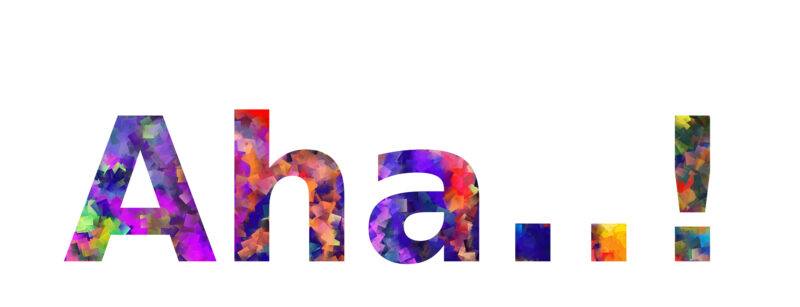The Blended Learning Discovery (An Aha Moment)
The hotel and restaurant labor shortage is a crisis in our economy. Customer service trainers can raise much-needed sales while minimizing employee turnover and improving the guest experience. Employees also need service standards training because they depend on the tips they earn.
A Life Of Hospitality
Dale left the room service kitchen pushing a cart of fresh food toward the service elevator. In his clean, pressed uniform, he headed to Mr. Espinoza’s room on the fourteenth floor of the hotel. The guest’s breakfast included fresh croissants, berries with cream, steel-cut oats, freshly squeezed Florida orange juice, and hot coffee.
It was 6:10 a.m. when Dale arrived at the guestroom door in less than three minutes. He gently knocked, keeping in mind the several privacy signs hanging on nearby doorknobs. (He didn’t want to disturb other hotel guests.) A distinguished, well-dressed businessman opened the door. He had black, short hair with a few touches of grey. He peered over his half-frame glasses with his large brown eyes and said, "Good morning!"
After smiling, greeting his guest, introducing himself, and asking permission to enter, Dale seamlessly set the room service table. He then uncovered the breakfast, poured the juice and coffee, and went through several steps of service, including a savory description of what was ordered. This earned him a 30% tip.
On the way back to his department, he decided to take the guest elevator to the first floor. After all, this was permitted by hotel management when he wasn’t transporting food or dishes. When elevator doors opened, he walked with the purpose of getting back to his next order. Along the way, Dale walked past an original Steinway piano in the lobby, and then under a magnificent, hand-cut, crystal chandelier made in Milan, Italy. (Few people knew that its rare, antique crystals were hidden in the Czechoslovakian countryside during World War II.) A beautiful hotel indeed; this was a place where kings, presidents, dignitaries, and Olympic champions had stayed.
Dale was proud of his accomplishments as a hospitality employee. He was earning big tips now and enjoyed a life of service. But that hadn’t always been the case. Because when he first started working there, he didn’t understand service standards (written requirements of the job) that must take place during each customer service task or experience. He was a year into his job when a talented hospitality trainer showed him what a guest experience should be like.
Customer Service Training For Luxury Hospitality Properties
Ten years earlier, as a luxury hotel and hospitality trainer, Herb’s schedule was already busy with eight hotels and resorts. He was traveling 40% of his time and working on many weekends and most holidays when the CEO stepped into his office and said, "We’ve got a problem with room service! And you need to fix it." The company had fallen in its service rankings, according to an international travel guide. In-room dining was the poorest-performing department at the company’s flagship property. "I’ll get on it," Herb boldly touted.
Herb began a detailed study of each shift to see what was going on. The most obvious issues were lack of training, inspection, and accountability standards. Herb inspected weekly and confirmed that this department was the biggest violator. It couldn’t meet sales goals and service standards. After writing a service recovery document and presenting it to his CEO, Herb suggested that the underperforming department could recover by following standard operating procedures (SOPs) and an improved training initiative.
The CEO had also hired a consultant who eventually came to the same conclusion. So he acquiesced; he would allow Herb to implement the SOPs and training plan with the help of the struggling department's head. But he worried whether employees would feel accountable. Herb pressed forward because he felt that he had already garnered the top-down support to make this training initiative a success. The executive chef was also on board.
Is Blended Learning Effective In Customer Service Training?
Because Herb had a long-term sense of investment in the company, its people, and its success, he pressed the recovery initiative. He hoped his standing in the company would help him succeed. He was also well-liked by the employees that he trained and was already a subject matter expert because he had grown up in the restaurant and hospitality business.
With a knack for writing and public speaking, Herb wasted no time moving ahead with a re-branded training guide. Next, he put together a new PowerPoint presentation, which he thought would impress everyone. He then started to book his upcoming, live training sessions.
Three weeks later, after several classes under his belt, he was eager to gather learner feedback and discover whether the training had affected sales and service or not. To his astonishment, the numbers had improved, but not to the degree to which he had hoped for. Then, an idea popped into his mind as he began to question his efficiency and effectiveness.

"What more can I do?" Herb asked himself. "I’m putting a lot of energy into these classes. I’m upbeat, animated; I’ll just keep training and things will improve!" Desperate to succeed, he thought to himself: "What if I take my PowerPoint slides and author a simple SCORM course in Captivate?" (To Herb, creating eLearning was new; he had only made a dozen or so courses and had used eLearning for safety and compliance training only.) "What can it hurt? I’ll give it a shot," he thought to himself.
By the very next week, Herb had published two eLearning courses to complement his live training sessions. Now, five weeks into his project, he wanted to solicit the help of Phillip, who was the executive chef. The two brainstormed over the phone: "Let’s give them the whole kitchen sink from our training arsenal," Herb said to the chef. "How about giving them a combination of live classes, eLearning courses, demonstrations, mentoring, test questions, and further service evaluations through a secret service shopper?" he continued.
"Let’s do it!" Phillip fired back. "I’ll require a 100% passing score on their eLearning test questions," he boasted.
Two months later there was a marked improvement in sales and service. Herb and Phillip were blown away. They had discovered, almost by accident, a blended learning model that worked. After polling their employees, they quickly learned that some employees learned best from class, while others preferred eLearning. Yet, others needed hands-on demonstrations to be successful. Little did they know that Dale, one of their star pupils, would take hold of their blended learning model and ten years later, he would still be using it as a hospitality professional. He wasn’t going anywhere; his tips were too good.
Today’s Need For Restaurants And Hotels To Provide Career Development For Employees
Remote work is not a possibility for those in the service industry. Workers who were laid off during the COVID pandemic may never come back. This leads to a severe labor shortage and service crisis. But hospitality employees still crave good training. Trainers and recruiters must do all they can to hire the right talent, give proper onboarding, and then offer service standards skills training that appeals to a variety of learning styles.

